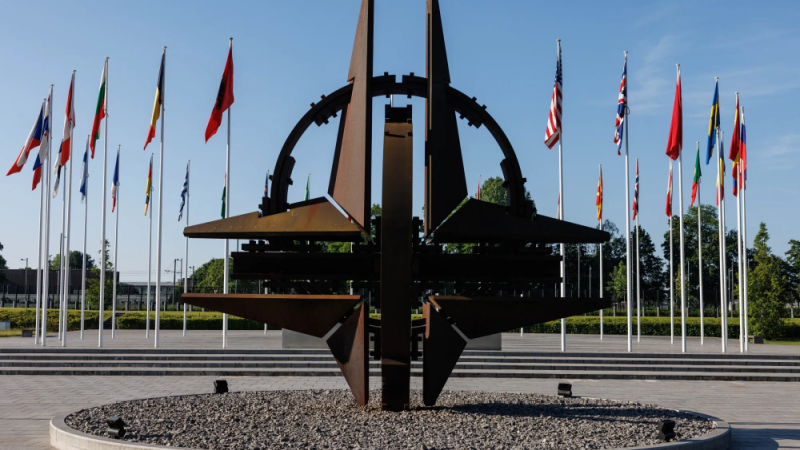
NATO Will Likely Survive Trump, But at a Cost
By Retired Admiral James Stavridis, Fletcher Dean Emeritus, and former supreme allied commander of NATO
With the election of Donald Trump to his second term as president, my phone lines began buzzing with calls from anxious Europeans. They had many questions, but they boil down to a single query: Will President Trump pull out of NATO? It is a question worth addressing, although the short answer is I think it is unlikely he would simply drop out of the venerable alliance. But buckle up for a bumpy ride.
There have been many calls over the years for the dissolution of the North Atlantic Treaty Organization, as well as almost constant frustration with the inequitable levels of defense spending among its members. When I was supreme allied commander of NATO a decade ago, I spent a great deal of time pushing the Europeans to even hit their self-approved goal of spending 2% of their gross domestic product on their militaries. They never got close in those years, despite unrelenting demands involving Afghanistan, Iraq, global terrorism, piracy off the coast of Africa and frequent cyberattacks from Russia.
Even before those post-9/11 years, dissatisfaction with NATO was rife in Washington. Many influential voices called for the alliance to simply fold up shop after the fall of the Berlin Wall in 1989. What was the point, some analysts reasoned, of spending money to defend a Europe that was no longer threatened by Russia? The original idea of the alliance, as one commentator put it, was to “keep the Germans down, the Russians out, and the Americans in.” After the wall went down, the alliance felt less essential.
President Trump, during his first term, was explicit that Europe had to spend more on its own defense. His message got some traction, and defense spending levels began to increase. Then the greatest salesman for NATO in the history of the alliance, Vladimir Putin, stepped in. When the Europeans saw Russian tanks rolling west into Ukraine well over two years ago, it rattled old ghosts — World War II, Budapest in 1956, Prague in 1968.
Russian tanks have a way of clarifying Western European thinking, and defense spending is now up significantly, with most of the alliance’s 32 members contributing more than the 2% goal. Some, such as Poland, are spending more on defense on a GDP basis than the United States.
But will that be enough to satisfy Team Trump? Probably not. Indeed, expect that one of the first asks out of Washington after the inauguration will be an increase in European (and Canadian) defense spending to at least 2.5% of GDP, and perhaps up to 3%. The US spends around 3.5% of its GDP on defense, and thus a 3% goal might look very reasonable to the new team at the White House.
There will also be a push for the Europeans to essentially take over the funding of Ukraine. While the Europeans are already outspending the US overall in Ukraine, the US has been supplying more of the military aid. This is beneficial for the US because the spending goes overwhelmingly to American defense corporations, creating jobs domestically and strengthening our own defense industrial base. But a likely approach from the new administration in Washington would be to simply say to the Europeans, “It’s your problem, handle it.”
If the Trump administration does insist on significantly higher contributions, it is conceivable that it could either lead to the alliance’s collapse or provoke enough European resistance to encourage the US to actually pull out. That’s possible, but unlikely.
Overall, the benefits of the alliance to the US are pretty clear. While Washington is frustrated with European defense spending, it is still collectively the second-largest defense budget in the world, ahead of China (which spends about 2% of its GDP on defense). And it is going up under the twin impetuses of the Trump push and Russian aggression.
European militaries also have the advantage of being globally deployable. That could be vital in the event of a US confrontation with China, when we are going to want to have warships of the UK, France, the Netherlands, Canada and Germany alongside those of Japan, South Korea and the Philippines. We also would want them with us against the Houthis to reopen the Red Sea and the Suez Canal.
Finally, there is a deep DNA of shared experience between the NATO militaries stemming from 20 years in Afghanistan, the war in Libya, combat operations in the Balkans and myriad cyber and counter-piracy operations that even an isolationist administration led by Donald Trump is unlikely to want to squander.
The common values of the alliance matter. We share a belief in democracy, liberty, freedom of the press, capitalism, freedom of religion and other crucial values. Europeans came and fought and died with us in Afghanistan to stand against radical terrorists.
These are probably not the last days of NATO, but it will likely be an uncomfortable period as our European allies readjust to the realities of a new and skeptical administration in Washington. Hopefully the fundamental value proposition — for both sides — will win out.
(This post is republished from Bloomberg.)
